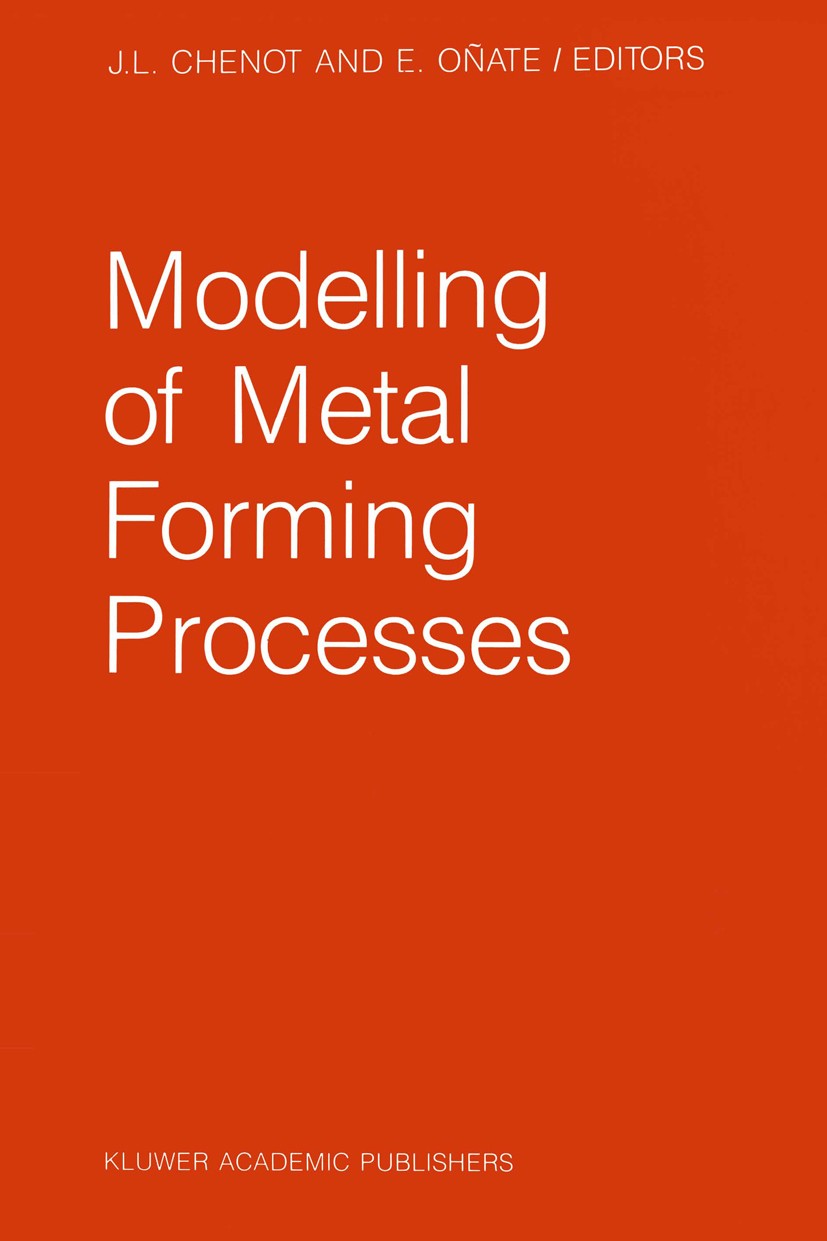| 书目名称 | Modelling of Metal Forming Processes | | 副标题 | Proceedings of the E | | 编辑 | J. L. Chenot,E. Oñate | | 视频video | http://file.papertrans.cn/637/636658/636658.mp4 | | 图书封面 |  | | 描述 | The physical modelling of metal forming processes has been widely used both in University and in Industry for many years. Relatively simple numerical models, such as the Slab Method and the Upper Bound Method, were first used and many such models are implemented in the industry for practical design or regulation of forming processes. These are also under investigation in the University, mainly for treat models ments which require low cost calculations or very fast answers for on-line integration. More recently, sophisticated numerical methods have been used for the simulation of metal flow during forming operations. Since the early works in 1973 and 1974, mainly in U. K. and U. S. A. , the applications of the finite element method to metal processing have been developed in many laboratories all over the world. Now the numerical approach seems to be widely re cognized as a powerful tool for comprehension oriented studies, for predic ting the main technological parameters, and for the design and the optlmi zation of new forming sequences. There is also a very recent trend for the introduction of physical laws in the thermo-mechanical models, in order to predict the local evolutio | | 出版日期 | Conference proceedings 1988 | | 关键词 | metals | | 版次 | 1 | | doi | https://doi.org/10.1007/978-94-009-1411-7 | | isbn_softcover | 978-94-010-7131-4 | | isbn_ebook | 978-94-009-1411-7 | | copyright | Kluwer Academic Publishers 1988 |
The information of publication is updating

|
|
 |Archiver|手机版|小黑屋|
派博传思国际
( 京公网安备110108008328)
GMT+8, 2025-11-15 22:17
|Archiver|手机版|小黑屋|
派博传思国际
( 京公网安备110108008328)
GMT+8, 2025-11-15 22:17


